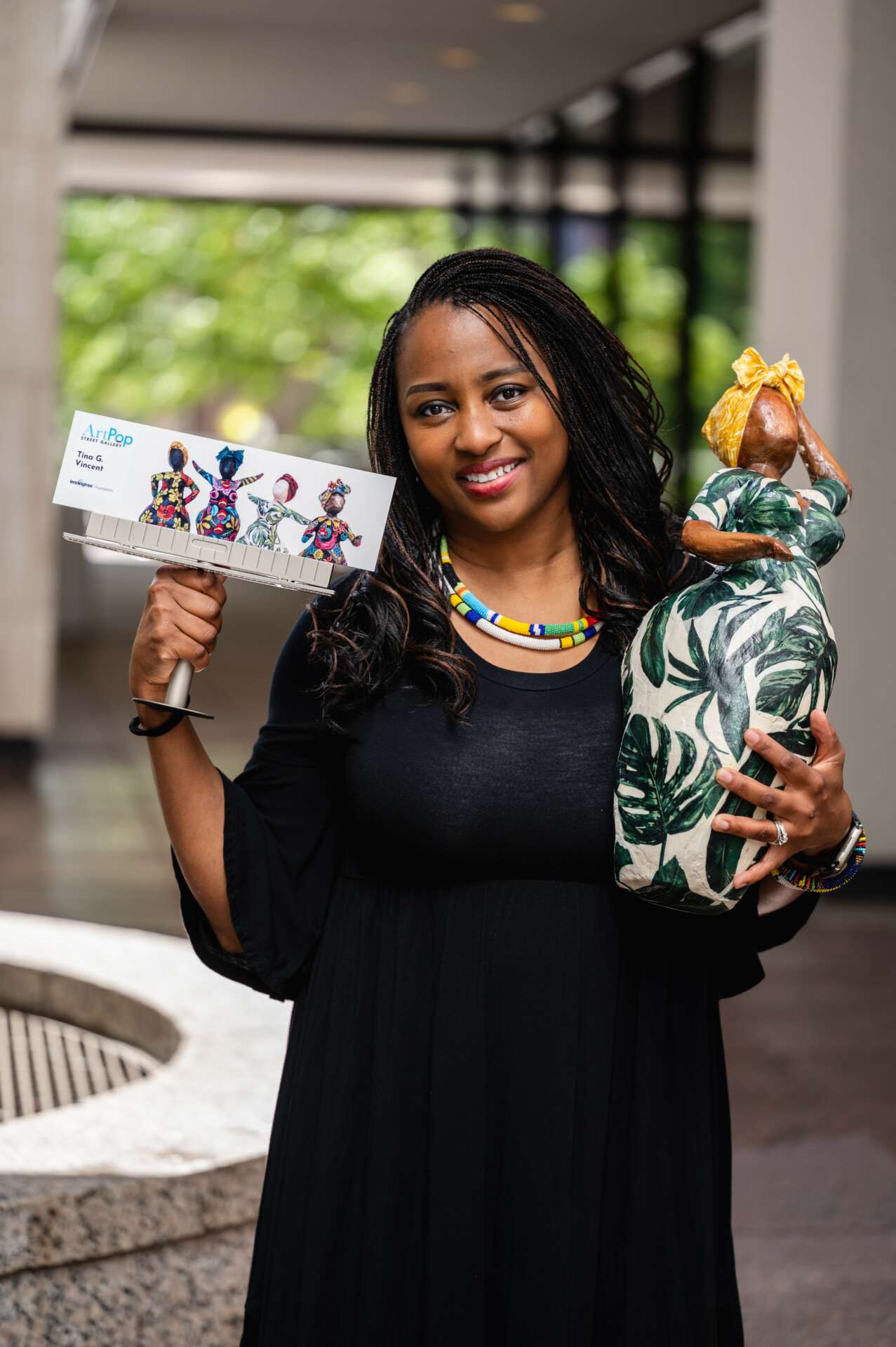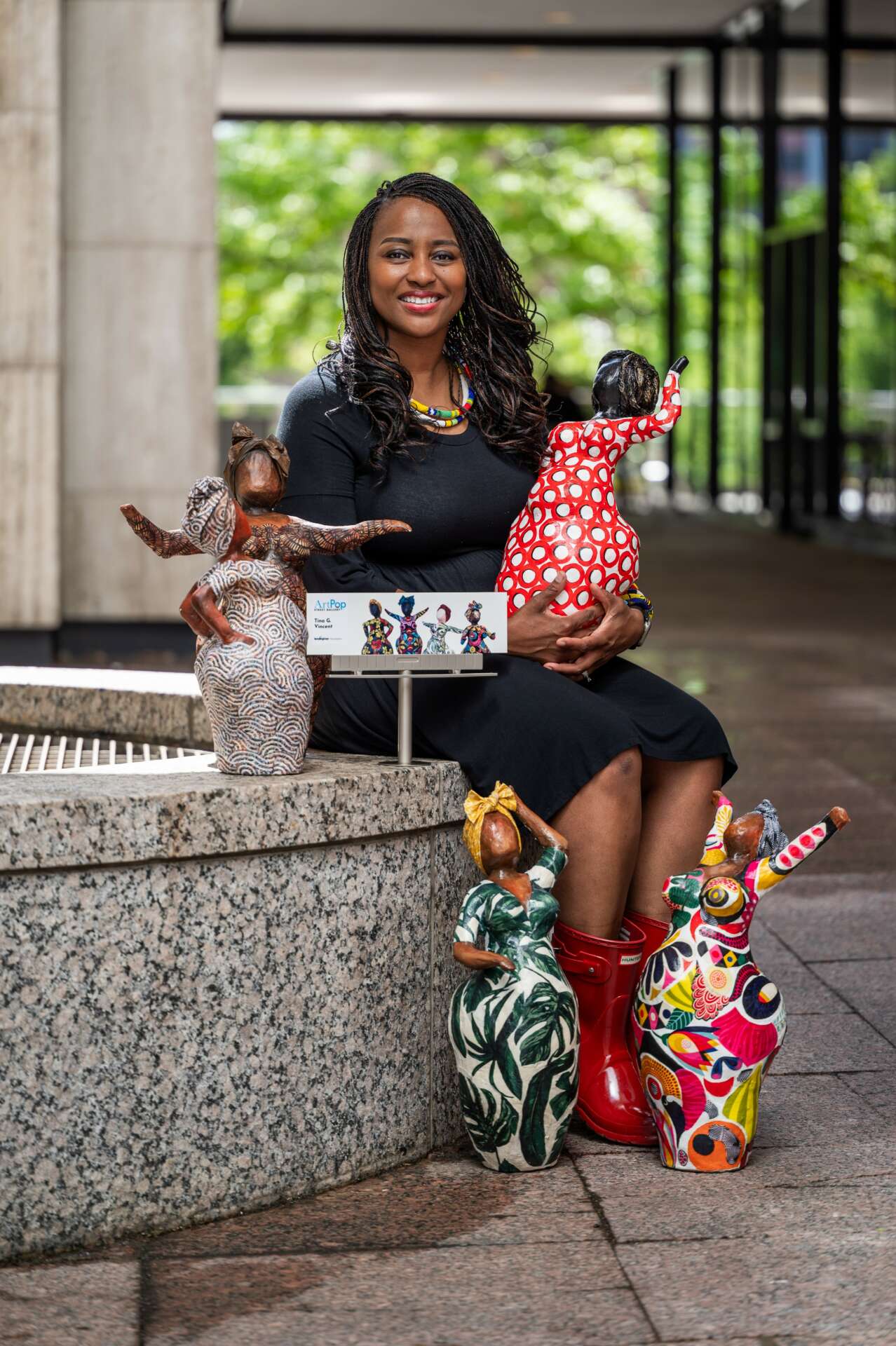Alright – so today we’ve got the honor of introducing you to Tina G. Vincent. We think you’ll enjoy our conversation, we’ve shared it below.
Tina G., appreciate you joining us today. Can you talk to us about a project that’s meant a lot to you?
7 years ago I started a new teaching job where I was going to have to teach a sculpture class. I had absolutely no experience with sculpture personally. At the time I felt that I was not as good with any type of 3D art as I was with 2D art. I decided I wanted to teach my students how to make figures of people and pay attention to body proportions. I began experimenting with paper mache and created some figures old African women of different skin tones and body sizes. I always make a lot of samples before introducing a topic to any of my classes to understand the medium and see what problems they may run into to better be able to help them overcome any challenges. Over time I began to realize that I was not bad at 3D art, I just initially did not have as much experience with it. I had not put in as much time working 3 dimensionally.
I feel that this was a meaningful project in that it made me realize with practice, time, experimentation and dedication I can learn to do create anything. I just have to put my mind to it. I no longer teach sculpture but it is now something that I am known for as an artist in my community. Over the years I have continued to make my paper mache women and they have evolved into more refined ladies as my technique improved. My “Women of Color” represent real women that we see in in black and African communities, our mothers, aunties, grandmothers etc. They are a celebration of real bodies of real women that once did not meet societies standards of beauty. They are a bold statement that beauty can come in all shapes, shades and sizes.

Great, appreciate you sharing that with us. Before we ask you to share more of your insights, can you take a moment to introduce yourself and how you got to where you are today to our readers.
I am a high school teacher and feel that it is important to model expectations of how to create a body of work through process, experimentation and revision of a given idea. Being a teacher is a big part of me as an artist. My students are my motivation daily in personal work. I want them to see that it is possible to make a living being an artist. Its important for students to show growth in their work and I feel that I hold myself to the same expectations. Each year I have a growth expectations for my students and therefore for myself. I feel that I have become such a strong artist that has experience with a range of techniques that began in my classroom as an lesson that I explored and practiced then incorporated professional body of work. I am really proud to be an teacher. I feel that being a teacher as well as a an owner of my professional art company is a great way to make a living. For some reason I think society wants us to separate the teacher from the artist. I feel that I get to create because I love it and don’t have pressure to have to sell, but ironically create better work without pressure and able to make sales anyway.
Last year I applied along with hundreds of local artists to the ArtPop’s Cities Program. It is an annual juried-in exhibition with a twist: the gallery is your entire city ( Charlotte NC). 20 selected artists receive a combined $7 million in public media space, educational opportunities, features at artist events, and more – all to foster sustainable careers in the arts and to make art accessible to all. I was selected as one of the 20 artists. ArtPop has given me so much exposure and has really validated my work as a professional artist. My paper mache sculptures are larger than life on billboards and electronic displays in Charlotte and around the country.
I am most known for my paper mache work but I also specialize in mixed media, quilting and painting. My work is a collection of contemporary African pieces that feature bold bright colors, textures and patterns.
Can you share a story from your journey that illustrates your resilience?
I am originally from Zimbabwe and moved to the United States to go to Lander University in Greenwood SC. I was never really interested in other academic subjects. As an African the idea of success is usually centered around the medical field or business. Whenever I told people I was studying art they often thought it was a joke and tried to figure out why. Being an artist was not something that people take seriously as an occupation. I have always been underestimated and I have found that it had been my biggest motivator. Something Oprah once said motivates me daily is that “Become so skilled, so vigilant, so flat-out fantastic at what you do that your talent cannot be dismissed.” I think of this as a teacher of an elective daily and working with children to create undeniably amazing work from my classroom when most people don’t expect much from kids in high school. I think of it when I make pieces with the most unlikely materials, paper mache is often unrefined and seen as a cheap medium but love to work with it to create elegant women’s figures. I love working with scraps of fabric and paper and things some people would see as trash and create beautiful things. I love educating people with the things I make changing their minds about what they may have thought was nothing and making them realize that it is something.
Is there mission driving your creative journey?
I want to be a professional artist and have people know my work and recognize my style. I want my women of color to help women see that beauty has so many shapes, skin tones and sizes. I want to inspire my students and other young artists to know that being an artist is a viable career path and see that learning and growth are a process.
Contact Info:
- Website: tinagvincent.com
- Instagram: tinagvincent
- Facebook: Tina G. Vincent
- Linkedin: Tina G. Vincent
- Other: Tiktok tinagvincent
Image Credits
Robb Webb


